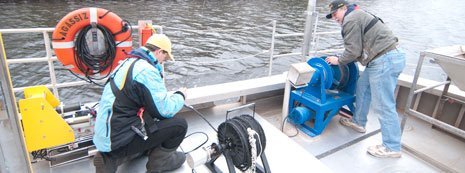Evaluation of cathode ray tube (CRT) glass concrete with/without surface treatment
Document Type
Article
Publication Date
4-6-2019
Abstract
Using the crushed waste Cathode Ray Tube (CRT) glass as fine aggregate to produce concrete can be an efficient method to resolve the recycling issue. However, the mediocre mechanical properties of CRT concrete obstructed its wide application. This study aims to resolve this issue based on the study on concrete/mortar specimen incorporating with an innovated surface treatment method. Specifically, a two-step surface treatment method was proposed to improve the performance of CRT concrete by modifying the surface layer of CRT glass sands with NaOH solution and Al(NO3)3 solution. About 30% of the portland cement was replaced with class-F fly ash to mitigate possible ASR damage by the reactive CRT aggregate. The mechanical performance (Compressive/flexural strength, dynamic modulus of elasticity, and flexural fracture energy) and the durability performance (Drying shrinkage and ASR expansion) was examined and compared among different specimens. In addition, the leaching levels of lead in different concrete specimenswas evaluated by toxicity characteristic leaching procedure (TCLP). The results showed that the surface treatment method of CRT glass sands could obviously improve both the mechanical properties and durability performance. Particularly, the leaching of lead (Pb) level in all concrete specimens was much lower than the TCLP heavy metals limit of 5 mg/L. This experimental study will facilitate the production of CRT glass concrete for secondary structural applications.
Publication Title
Journal of Cleaner Production
Recommended Citation
Wang, J.,
Guo, S.,
Dai, Q.,
Si, R.,
&
Ma, Y.
(2019).
Evaluation of cathode ray tube (CRT) glass concrete with/without surface treatment.
Journal of Cleaner Production,
226, 85-95.
http://doi.org/10.1016/j.jclepro.2019.03.300
Retrieved from: https://digitalcommons.mtu.edu/cee-fp/99


Publisher's Statement
©2019 Elsevier Ltd. All rights reserved. Publisher's version of record: https://doi.org/10.1016/j.jclepro.2019.03.300